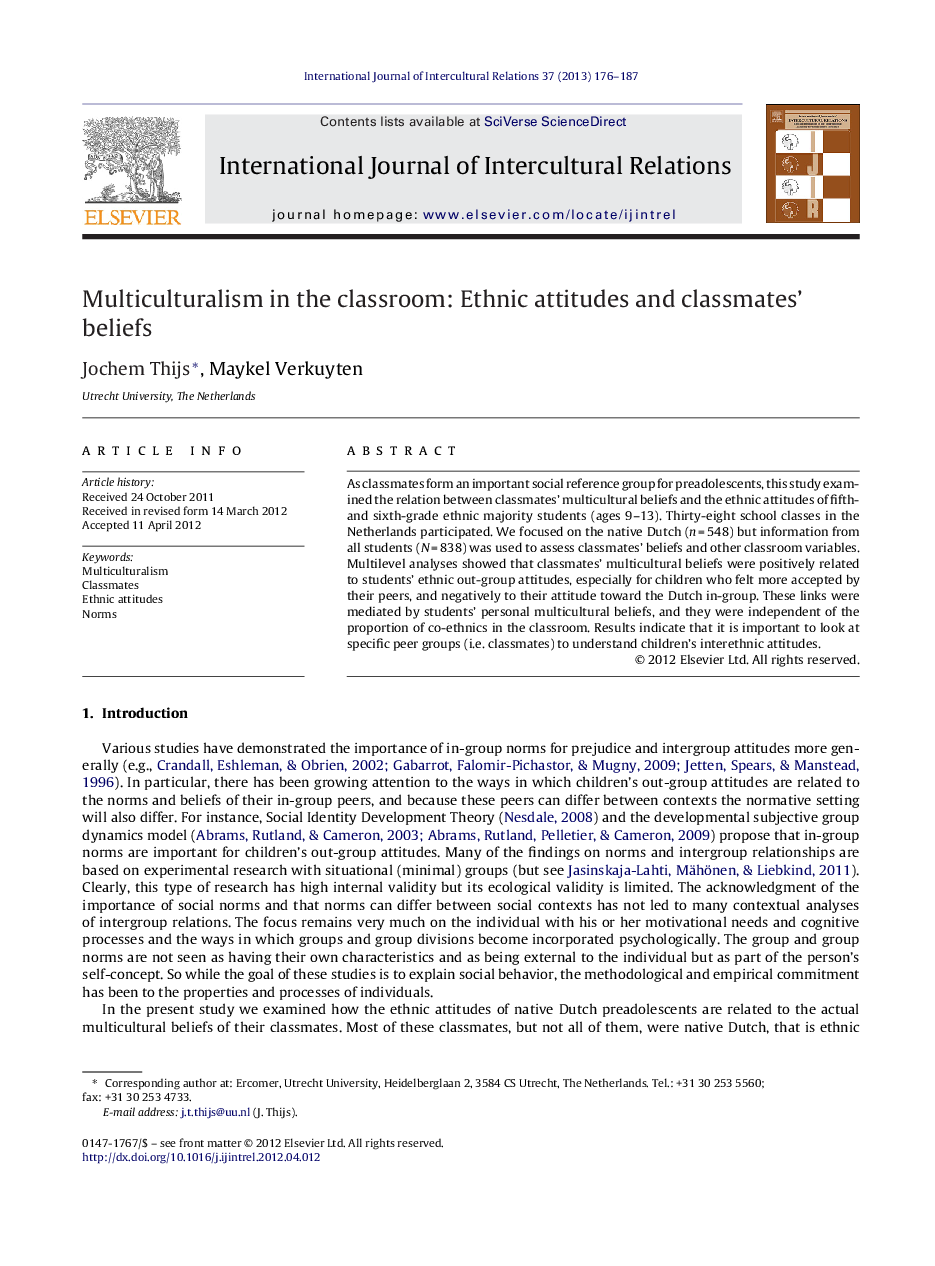| Article ID | Journal | Published Year | Pages | File Type |
|---|---|---|---|---|
| 947090 | International Journal of Intercultural Relations | 2013 | 12 Pages |
As classmates form an important social reference group for preadolescents, this study examined the relation between classmates’ multicultural beliefs and the ethnic attitudes of fifth- and sixth-grade ethnic majority students (ages 9–13). Thirty-eight school classes in the Netherlands participated. We focused on the native Dutch (n = 548) but information from all students (N = 838) was used to assess classmates’ beliefs and other classroom variables. Multilevel analyses showed that classmates’ multicultural beliefs were positively related to students’ ethnic out-group attitudes, especially for children who felt more accepted by their peers, and negatively to their attitude toward the Dutch in-group. These links were mediated by students’ personal multicultural beliefs, and they were independent of the proportion of co-ethnics in the classroom. Results indicate that it is important to look at specific peer groups (i.e. classmates) to understand children's interethnic attitudes.
► Majority students’ ethnic attitudes are linked to classmates’ multicultural beliefs. ► This link is stronger for peer-accepted students. ► This link is mediated through children's own beliefs.
